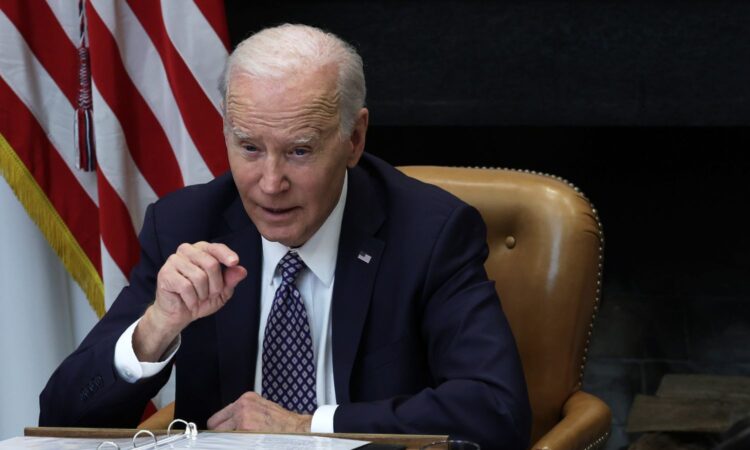
‘Junk Fees’ Cost Typical Household $650 A Year
11 hr 19 min ago
President Joe Biden’s administration has been waging war on “junk fees,” and new research by his economic advisors describes the enemy in greater detail than they’ve ever given before.
Junk fees, defined as charges that are “mandatory but not transparently disclosed to consumers,” cost a typical household at least $650 a year, or $90 billion throughout the whole economy, the White House’s Council of Economic Advisors wrote Tuesday in a blog post.
“These fees are likely not only harming consumers and competition in the short run but give firms an incentive to divert resources away from productive investments and toward non-productive obfuscation, and toward products that carry junk fees and away from products that do not,” they wrote.
The economists arrived at that figure by adding ten categories of junk fees that they were able to estimate using publicly available data, building on previous research that had tallied up six categories of junk fees. The new research includes data on the fees that companies tack onto food delivery apps, restaurant service fees, apartment applications, and event tickets.
Those aren’t all the junk fees we pay, just the ones for which the researchers were able to gather data on.
The research came on the same day as the administration fired off its latest salvo in its war on junk fees. The Consumer Financial Protection Bureau announced an $8 limit on credit card late fees Tuesday morning, effectively cutting them by three-quarters, a move that drew instant opposition from banks. The White House also announced the formation of a “strike force” led by the Department of Justice and the Federal Trade Commission to crack down on corporations that use anti-competitive, unfair, or fraudulent business practices to raise prices.
Service Sector Continued to Grow in February
15 hr 40 min ago
Activity in the services sector grew for the 14th consecutive month in February.
The Institute for Supply Management’s monthly index on services came in 52.6%. That’s slightly below the 53.0% economists expected and the 53.4% reading from January.
“Despite slower momentum, the services sector is still sturdy amid healthy demand, and will likely continue in expansion mode for some time,” wrote BMO’s Senior Economist Priscilla Thiagamoorthy.
The services index has grown 44 of the last 45 months, despite measures in other sectors, such as manufacturing, showing recession warnings, wrote Wells Fargo Economists Tim Quinlan and Shannon Seery Grein.
“Amid the hand-wringing over potential for recession, this indicator got it right,” the pair wrote. “Yet, to some extent, this resilience is problematic to Fed policymakers because, to the extent that the service sector continues to thrive, there is diminished incentive for service providers to lower prices.”
Orders For Manufactured Goods Down in January
16 hr 59 min ago
Orders for manufactured goods were down more than economists expected in January.
For the third time in four months, orders were down, according to a survey of manufacturers conducted by the Census Bureau. The 3.6% decline of $21.5 billion completely wiped out November’s growth and was more than the 0.3% decrease in December. Economists expected a 3.1% decline, according to a survey of economists conducted by Dow Jones Newswires and the Wall Street Journal.
Shipments and inventories also decreased, showing a broader slowdown across the manufacturing cycle.
A decrease in this measure of manufacturing can be a signal that consumers are demanding fewer goods.
Federal Reserve Chair Speaks to Congress Tomorrow. Here’s What to Expect
17 hr 24 min ago
Federal Reserve Chair Jerome Powell will deliver his semi-annual report to Congress this week—first in the House on Wednesday and then in the Senate on Thursday.
Economists expect Powell to deliver the same message many of his colleagues have delivered since their last meeting: There is no rush to cut rates at this time. Inflation hangs above the Federal Reserve’s goal of 2% but the job market remains strong and consumer spending has bolstered the country’s gross domestic product.
With no obvious signs of a long-predicted recession, the Federal Reserve feels they have time to monitor inflation and ensure it is sustainably moving toward its goal before cutting.
“He will likely stick to the January FOMC script but the market always seems to get something new out of these appearances which include a lot of congressional Q&A,” wrote Deutsche Bank analysts Monday.
State of the Union Could Shed Light on Economic Policies
18 hr 35 min ago
President Joe Biden’s State of the Union address on Thursday will give him an opportunity to lay out his economic priorities for the coming year.
The economy has been growing in recent months, as the U.S. has seen better-than-expected job gains, an unemployment rate of 3.7%, and an improving inflation rate. But despite these positive movements, consumers are glum about the economy and only 36% of Americans approve of the way Biden is handling the economy, according to Gallup polling.
A recent Pew Research Center poll shows Americans are paying particular attention to health care costs, social security and the budget deficit, with nearly three-quarters of respondents rating the strengthening economy as their top priority this election cycle. The job market and global trade are also on Americans’ radar.
Biden will likely address some of these concerns in his speech. Economists expect he will likely propose higher rates of taxation on wealthy individuals, a solution for the budget deficit that he has offered in the past. He is also expected to talk about creating accessible, affordable child care and the work he’s done to ease the debt burden of student borrowers.
Read more about what to expect from Biden later this week here.
Update: This post has been updated to add additional data from Gallup on Americans’ approval of Biden’s economic policy.






